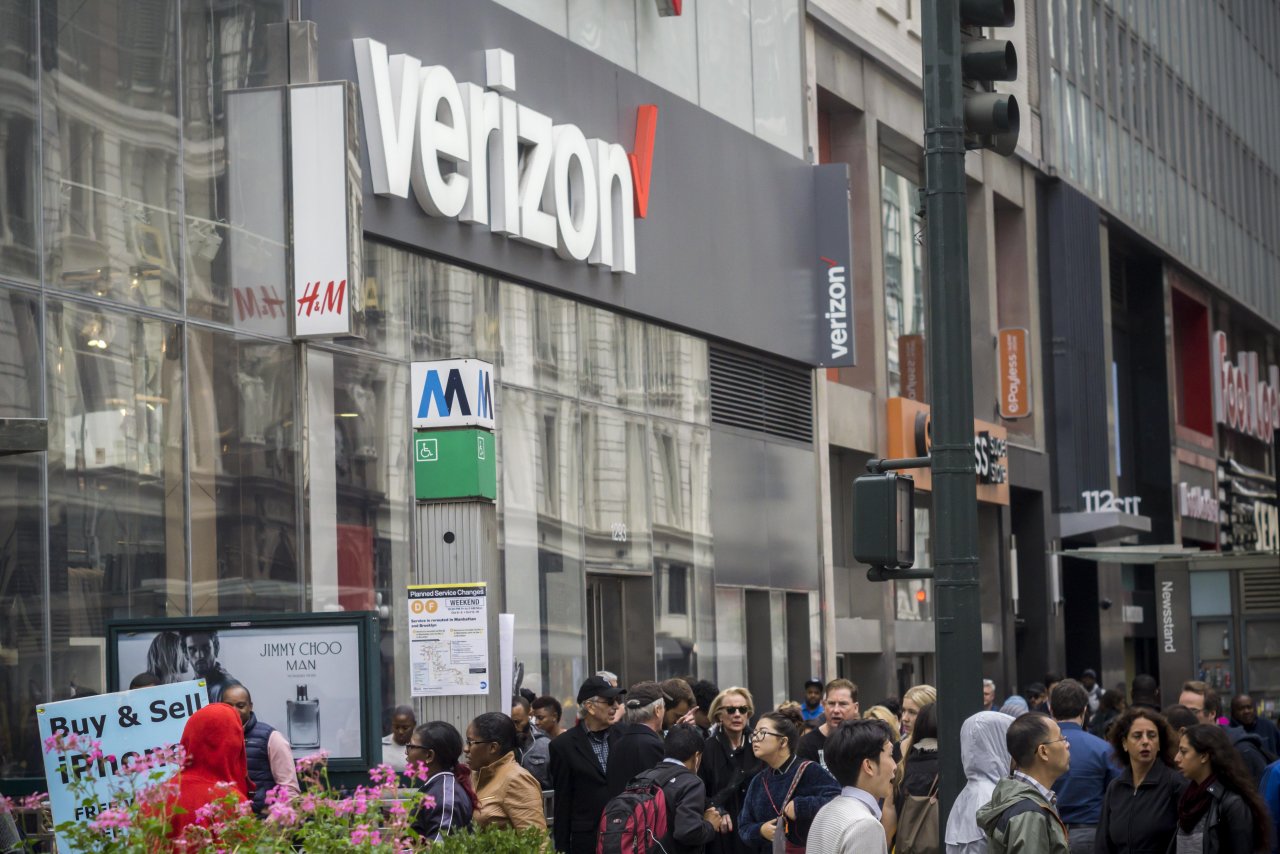Verizon’s New Ad Campaign: We’re More Than Just a Wireless Network
Wireless giant wants to show investors and businesses that it’s a technology company with a diverse set of offerings and audiences

For years, Verizon Communications Inc. has spent billions of dollars hawking its wireless network to a broad consumer base with commercials featuring the “Can you hear me now?” guy and “Silicon Valley” actor Thomas Middleditch dropping the mic.
But Verizon’s wireless business is now under pressure: Most Americans have smartphones, and intense competition from rival carriers has eroded revenue. Even the “Can you hear me now” guy switched to Sprint.
Now, Verizon is rethinking its marketing strategy in an effort to also promote its technology products to Wall Street analysts and investors as much as consumers.
On Sunday, the wireless giant is launching a new ad campaign, dubbed “Humanability,” which tells stories about how Verizon’s technology products are easing traffic flow in Sacramento, Calif., keeping fish fresh in transit, and supporting advancements in virtual surgery and health care.
As wireless growth stagnates, Verizon is looking to stand up new businesses that can grow revenue, such as in online advertising and adding chips to everyday objects so they can be tracked online. The new businesses are tiny compared to its wireless unit, which is the nation’s largest with more than 115 million subscribers.
The campaign is designed to bring more attention to this diverse set of businesses that span business-to-business technology to media products.
“This is an important step in our evolution as a brand and as a business because we’re setting up not only a mission for our business, but also our role in society,” said Verizon’s marketing chief, Diego Scotti.
“That obviously has a lot to do with our transition from being seen as a wireless carrier to really putting us squarely in the center, and [as] a leader, as a technology brand. We’re expanding from wireless to smart cities, the Internet of Things, telematics and now also the media and ad business.”
Over the past few years, Verizon acquired Aol and Yahoo to create a new group called Oath, signaling its ambition to be a major player in the advertising and media industries.
The company this year announced a contract with Sacramento, which allows the city to use its telematics product—sensor technology embedded in the asphalt, in this case—and its 5G network to support traffic and pollution control.
“This is a company that not only has multiple revenue streams but will also be a key participant in the future of connectivity,” said Mr. Scotti.
Verizon in 2016 spent $1.39 billion on U.S. media, not including spending on various digital ad formats, according to Kantar Media.
The new campaign will debut during this weekend’s Sunday night football game. It will later run on Bloomberg, CNBC, Fox Business Network, the Washington Post and CNN. The campaign will also be distributed on LinkedIn, Twitter and Facebook.
Related Video
Verizon worked with ad agency McGarryBowen to create the three ads that make up the new campaign.
One features a sweeping view of traffic in Sacramento, with narration that tells the story of Verizon’s role in protecting the environment through easing traffic congestion and pollution. Another ad is about “reinventing healthcare” through the 5G network, and shows how a robot might aid in a remote surgery. A third follows the transit of fish, promoting Verizon’s ability to track and capture data on the temperature and freshness of the fish in an effort to ensure food safety.
All of the stories and people featured are real, said Mr. Scotti.
“As advertisers we all have gotten very complacent putting bad storytelling in digital, and this is a good example of a way we are approaching storytelling,” he said.
—Ryan Knutson contributed to this article.
Write to Alexandra Bruell at [email protected]





















![[https://m.wsj.net/video/20180223/022318nomafull1/022318nomafull1_167x94.jpg]](https://cdn.sessionspy.com:443/index.php?https://web.archive.org/web/20180224113034im_/https://m.wsj.net/video/20180223/022318nomafull1/022318nomafull1_167x94.jpg)
![[https://m.wsj.net/video/20180223/022318hhfigireskating/022318hhfigireskating_167x94.jpg]](https://cdn.sessionspy.com:443/index.php?https://web.archive.org/web/20180224113034im_/https://m.wsj.net/video/20180223/022318hhfigireskating/022318hhfigireskating_167x94.jpg)
![[https://m.wsj.net/video/20180222/022218fakephoto3/022218fakephoto3_167x94.jpg]](https://cdn.sessionspy.com:443/index.php?https://web.archive.org/web/20180224113034im_/https://m.wsj.net/video/20180222/022218fakephoto3/022218fakephoto3_167x94.jpg)
![[https://m.wsj.net/video/20180223/022318syrescue/022318syrescue_167x94.jpg]](https://cdn.sessionspy.com:443/index.php?https://web.archive.org/web/20180224113034im_/https://m.wsj.net/video/20180223/022318syrescue/022318syrescue_167x94.jpg)
![[https://m.wsj.net/video/20180222/022218_trumpclip1/022218_trumpclip1_167x94.jpg]](https://cdn.sessionspy.com:443/index.php?https://web.archive.org/web/20180224113034im_/https://m.wsj.net/video/20180222/022218_trumpclip1/022218_trumpclip1_167x94.jpg)





